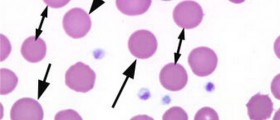
Myeloma or better to say multiple myeloma is rather rare form of cancer that features with increased production of plasma cells. Plasma cells are normally present in bone marrow and they present a form of white blood cells. Their primary function is production of immunoglobulins or antibodies which are of major help in fighting bacterial and viral infections. Still if the production of even one antibody gets out of control, which is a case in multiple myeloma, the damage to the whole body is inevitable. In patients suffering from multiple myeloma there is increased production of one specific antibody called M protein or paraprotein. Men are more prone to the disease and the occurrence is basically after the age of sixty.
All the symptoms may be divided into several groups, those which are related to skeleton, those connected to hypercalcemia, the symptoms of blood irregularities, those related to kidney functioning and symptoms that are connected to infections.
Skeletal symptoms are presented with pain. The intensity of the pain is high and the pain is mainly located in long bones, pelvis or back. The pain occurs as a result of bone destruction. Myeloma cells lead to osteolysis Patients with myeloma are more prone to fractures than general population. The symptoms affecting spine may be presented in irregular curvature of the spine.
The bone destruction leads to increased levels of calcium in blood. This calcium plays a role in further destruction of nerves and the patients may experience changed sensations in hands and feet. This tiredness may be additional symptom. The symptoms of increased levels of calcium in blood present with nausea and weakness. Hypercalcemia also affects kidneys and the calcium may lead to severe damage of these organs leading to kidney failure.
The condition is followed with anemia. This blood disorder is present in almost all patients. So the classical symptoms of anemia (tiredness, shortness of breath, fast heart rate etc.) are present in multiple myeloma as well. Anemia often results as a consequence of bone marrow infiltration by plasma cells. Additional blood disorders include hyperviscosity of blood. Hyperviscosity of blood results from increased amount of M protein. This protein bonds with platelets and obstruct their normal functioning. So in this case patients may show signs of increased bruising, hemorrhage within gastrointestinal tract, nose bleeding and so.
Additionally the loss of appetite is common and the patients lose weight. They are prone to infections more than other people due to suppression of production of white blood cells.

















Your thoughts on this
Loading...